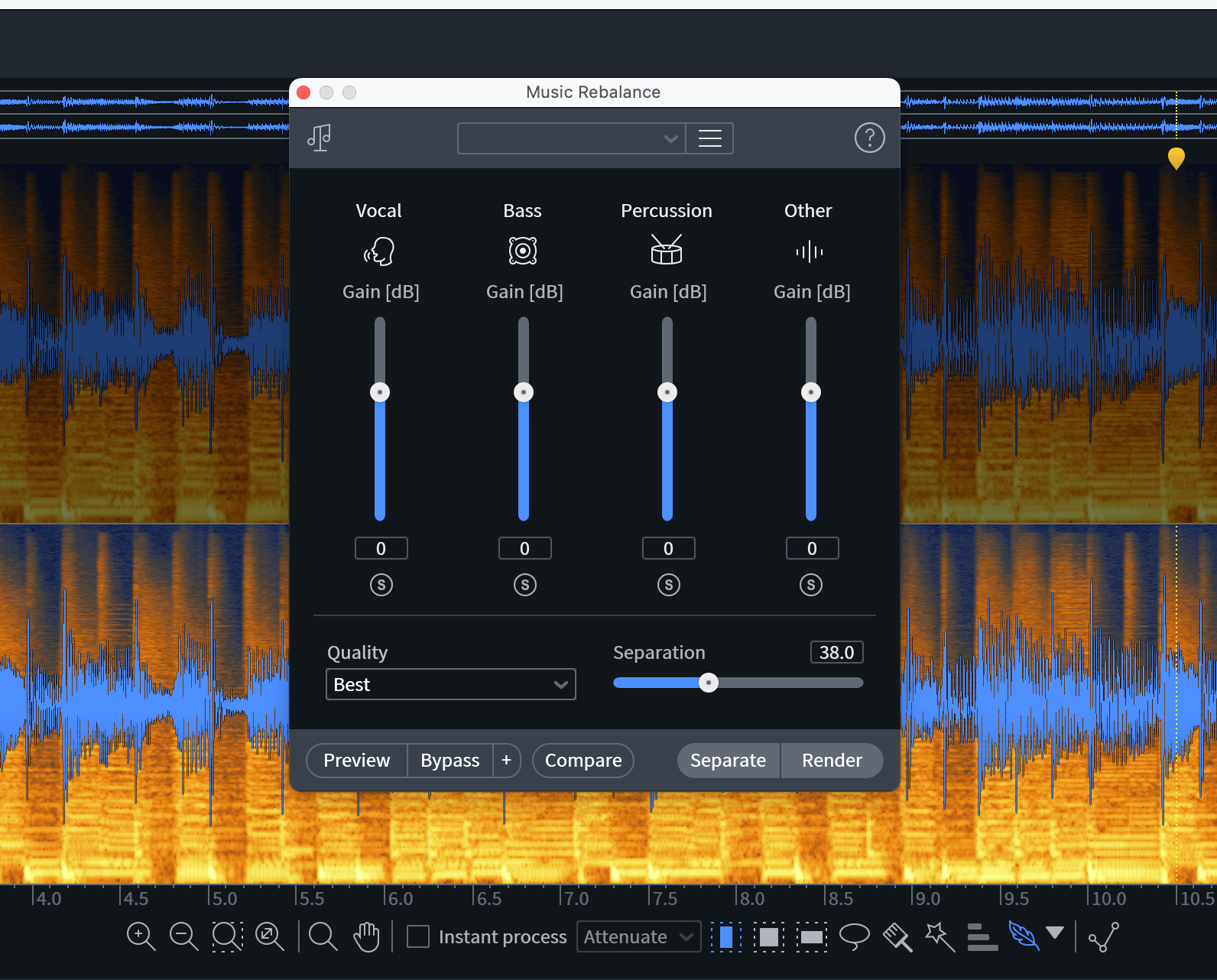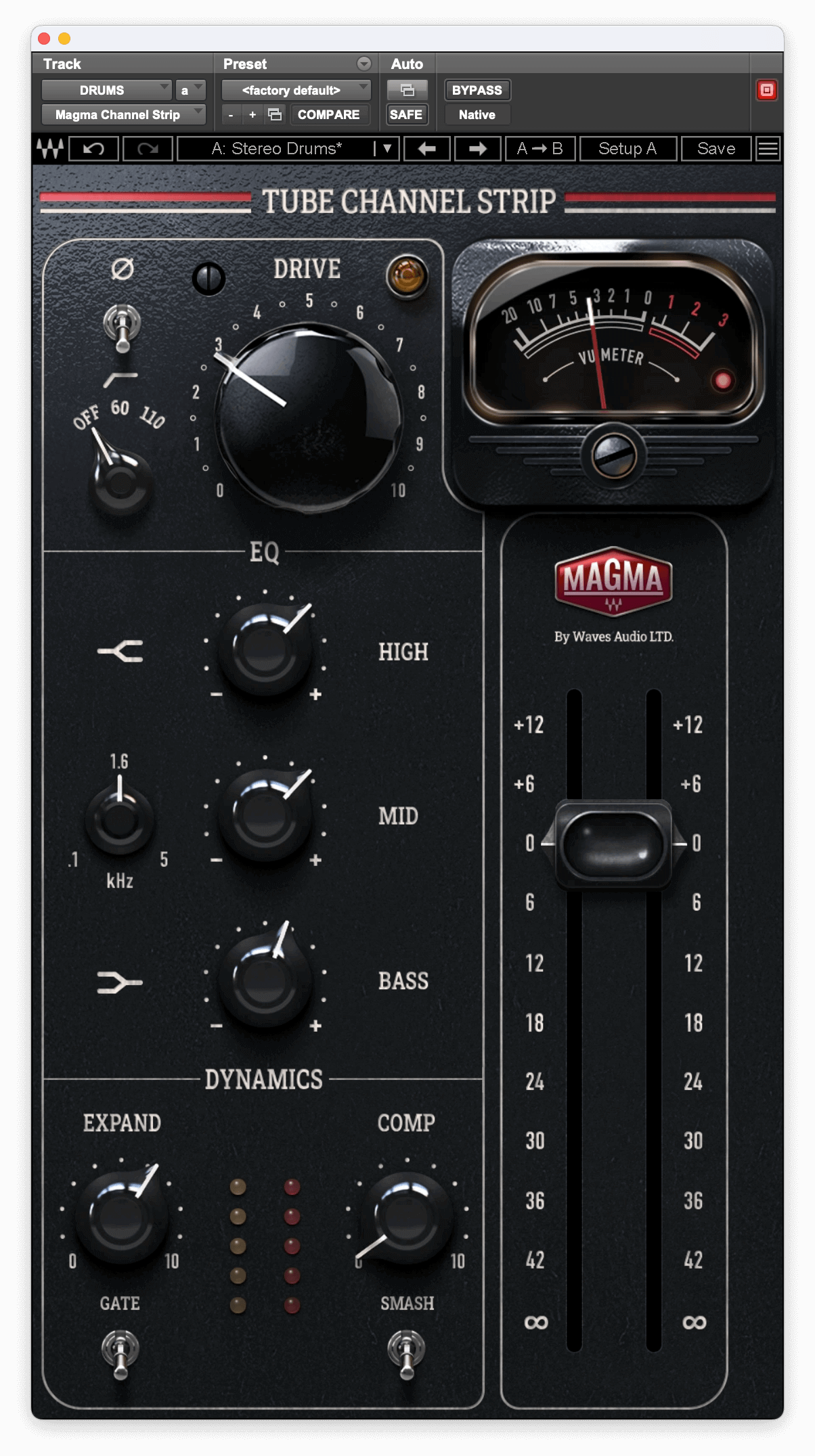There are many cool moments in the video ”Aerosmith Basement Tapes Enhancing Techniques: Episode 1.” Perhaps the most goose-bump-inducing one is when you hear Aerosmith playing “Dream On” during a basement rehearsal in 1971. Guitarist Joe Perry recorded that rehearsal on a 2-track recorder two years before the song was released and prior to the band getting a record deal. Yet the performance, including Steven Tyler’s vocal sounds strikingly similar to the record. Listening to it makes you realize just how good the band and the songwriting were.
In the video, engineering legend Michael Brauer demonstrates how he, along with engineer Fernando Reyes, broke out the original recording’s component parts onto separate tracks and cleaned and polished the overall sound of the rehearsal tape.
Splitsville
With the tape copied to a Pro Tools session, Michael and Fernando separated the start and end points of each song and used Pro Tools Markers to label them.
They then built what’s essentially a multitrack session that not only included the original 2-track mix, which had the vocals mostly to one side and the instruments to the other, but also a “vocals forward” copy that emphasized the vocal track, a duplicate of the drum track on which they isolated (via editing) the kick and snare, and most importantly, separate stems of the vocal, bass, drums and guitars created from the original recording using the Music Rebalance tool in iZotope RX Advanced software.

The layout of the session in Pro Tools.
If you’re unfamiliar with RX, it’s a potent audio editor with a huge selection of cleanup and editing tools. Many of the tools in RX incorporate artificial intelligence (specifically “machine learning”) in their programming.
The Music Rebalance tool analyzes a stereo (or mono) mix and can create four separate stereo stems: Vocal, Bass, Drums and Other Instruments. The latter contains guitars, keyboards and other elements.

The Music Rebalance tool opened in iZotope RX 10 Advanced.
If you solo the stems that Music Rebalance creates, they won’t sound entirely clean. You’ll hear some phasing and artifacts. But when you play them together, they combine to create the complete file. You can adjust levels from within the Music Rebalance tool or, as Michael and Fernando did, bounce out each stem individually and import it onto a track in Pro Tools.
With the tracks in your DAW, you can change their volume, process them, and even adjust their panning and routing. Albeit with some limitations (for example, the Other Instruments stem may contain several instruments), Music Rebalance lets you convert a stereo mix back into a multitrack session.
The Recipe
In the video, Michael explains that the goal wasn’t to make the tape sound like a record. It was to improve it sonically while maintaining the basement-tape vibe. He experimented until he found an overall approach that he liked and then used that as a template for processing all the songs (with minor variations when needed).
Before finalizing his approach, he had to get the band’s sign-off. He provided them with four different options with varying amounts of sweetening. The band liked the approach with the most subtle approach.
On the “vocals forward” track, Michael chose UAD LA-2A plug-in for compression and Slate Digital Verbsuite Classics plug-in, set to a short, room-like ambience.

The plugins for the “vocals forward” track.
He also layered in the isolated kick and snare track subtly to add some subtle punch. In addition, he used SPL Twin Tube to add a bit of saturation to the RX drum stem. He also added some EQ with a Brainworx SSL 4000E channel strip plugin, consisting of small boosts at 4.5kHz, 270Hz and 75Hz.

The plugins for the separated drum track.
On the RX bass stem, he used the LA-2A and saturation from the Black Box Analog Design HG-2MS mid/side saturator. He even layered in the original track at a lower volume for added fullness.

The plugins for the separated bass track.
Finally, he mixed in some of original track for added depth.
You Can Do It
In the case of the Aerosmith project, Michael and Fernando were dealing with what you could call an “audio restoration” scenario. It’s easy to imagine other situations where a similar “deconstructive” approach could be helpful. For example, if you’ve got an old, live recording that you want to sweeten, and you have RX Advanced (Steinberg’s SpectraLayers offers a similar feature called “Unmix Stems”), it’s certainly worth a try to see if splitting it into stems that you can rebalance and process might help improve it.
Another scenario is if you have a mix you’re unhappy with but don’t have the option to reopen. The upcoming audio example will demonstrate such a situation.
First, here’s an excerpt from a mix of a song demo that could use some tweaking.
As you can hear, the vocals are a bit too dry, and the guitars are too loud.
Next, we’ll split it with RX’s Music Rebalance. The Best Quality setting was used for the stems, and the Separation slider, which controls the intensity of the process, was set at its default of 38 (out of 100).
We ended up with the following stereo stems:
The bass.
The drums.
The vocals.
The “Other Instruments” track (guitars)
The guitars were moved onto two mono tracks making it possible to alter the stereo balance, which was a little left heavy in the original mix.
The drums were beefed up using the new Waves Magma Channel Strip, which features modeled tube saturation. We set the (tube) Drive to about 3 and slightly boosted in the lows, mids and high end.

The setting for the drum stem on the Waves Magma Channel Strip.
The vocal track also got a Magma channel strip, with the Drive at a little over three and small cuts in the highs and miss (set at 5kHz). We also followed Michael’s approach and inserted a Universal Audio LA-2A Silver plugin for compression. To help with the dryness of the vocal, we inserted a SoundToys EchoBoy Jr. delay, set to a 1/4-note delay and also sent the vocal via bus send to a Universal Audio Lexicon 480L reverb plugin.
Here is the revised mix.
Here again, is the original mix, so you can easily compare them.